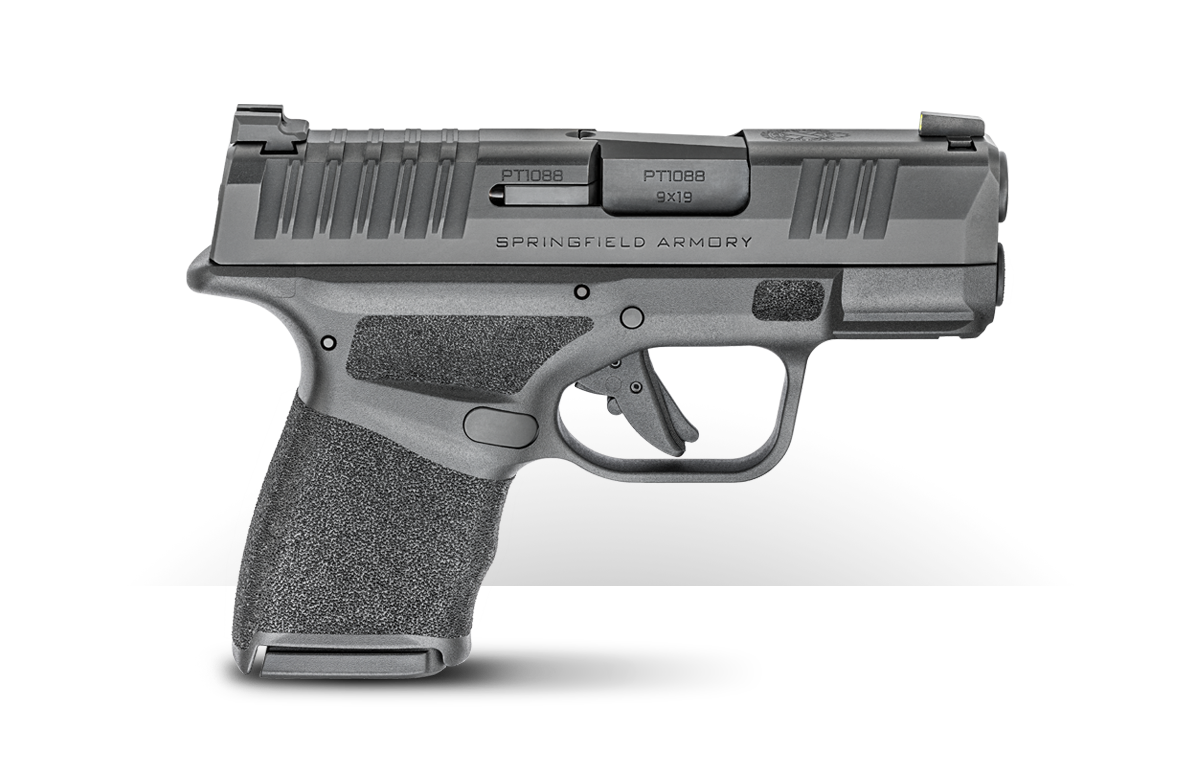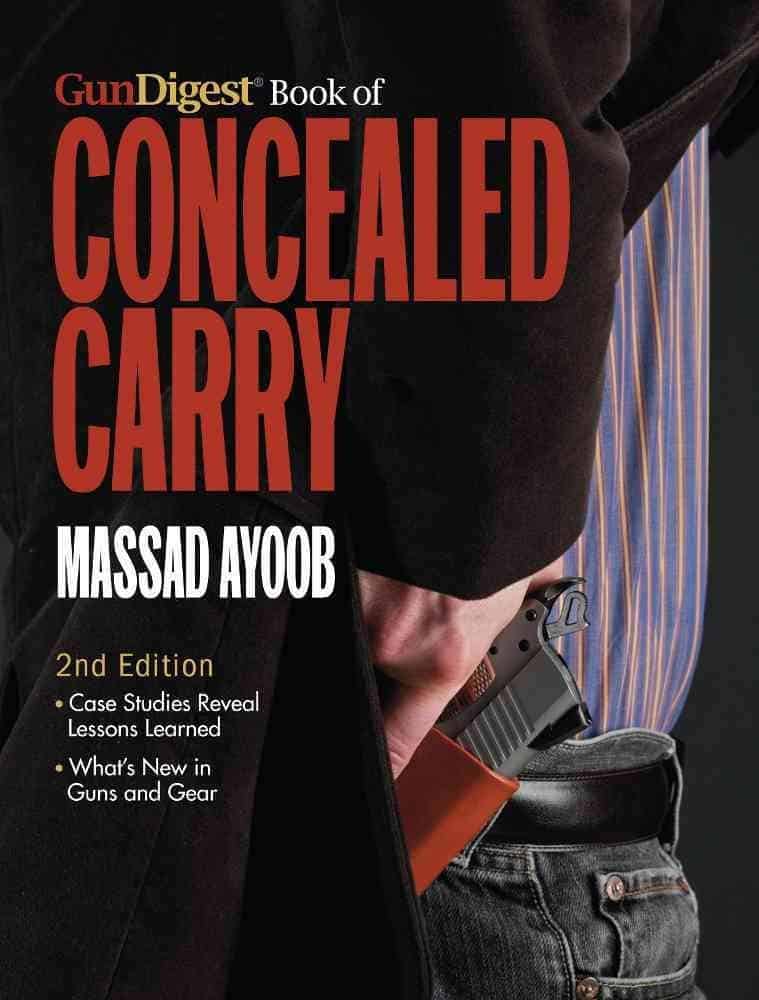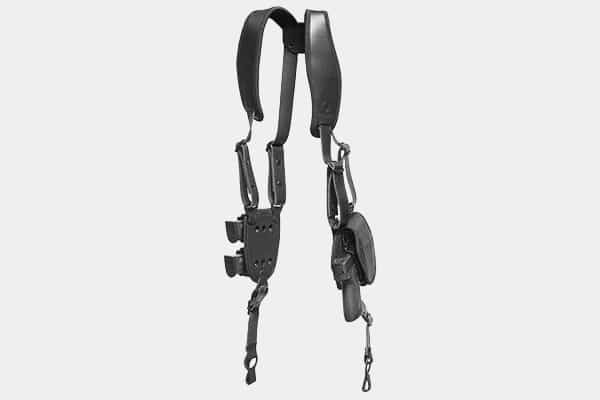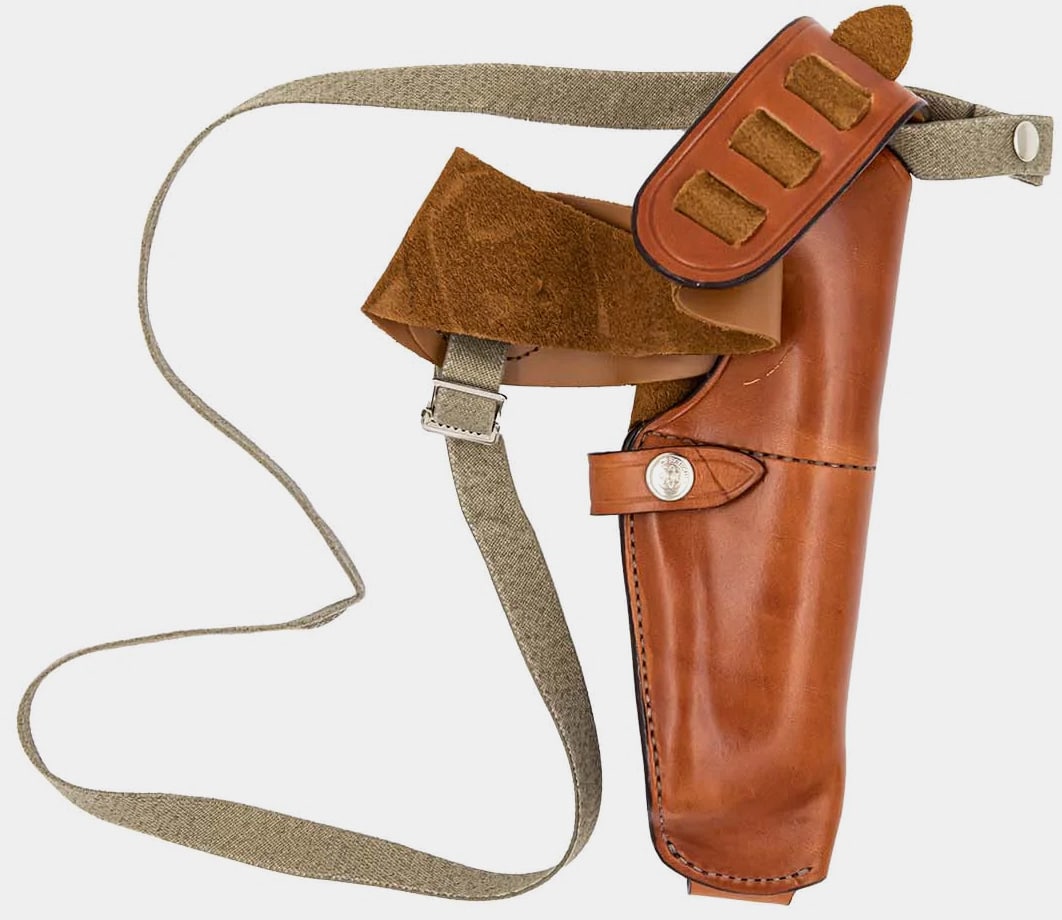Ayoob: How to Draw from a Shoulder Holster
November 8th, 2023
6 minute read
Learning how to draw from a shoulder holster is an important skill should you decided to conceal a firearm for self-defense in this way. In this article, concealed carry expert and firearms trainer Massad Ayoob talks about the shoulder holster as a viable method of safely carrying a gun for personal protection.

Shoulder holsters abound in real history: Doc Holliday, Wyatt Earp, Eliot Ness and the real-life detective who worked the Zodiac case that inspired Steve McQueen to duplicate that cop’s revolver in an upside-down rig. And of course, in fiction: Mike Hammer carried his .45 auto that way, Shell Scott his revolver and James Bond his pistols.
But what about shoulder holsters today? Definitely not as trendy, but surely useful. For someone constantly seated behind a desk or a steering wheel, the shoulder rig is extremely accessible at speed. For women, ladies’ fashion being what it is in the business world, the shoulder rig alleviates the need to wear a dress gun belt.
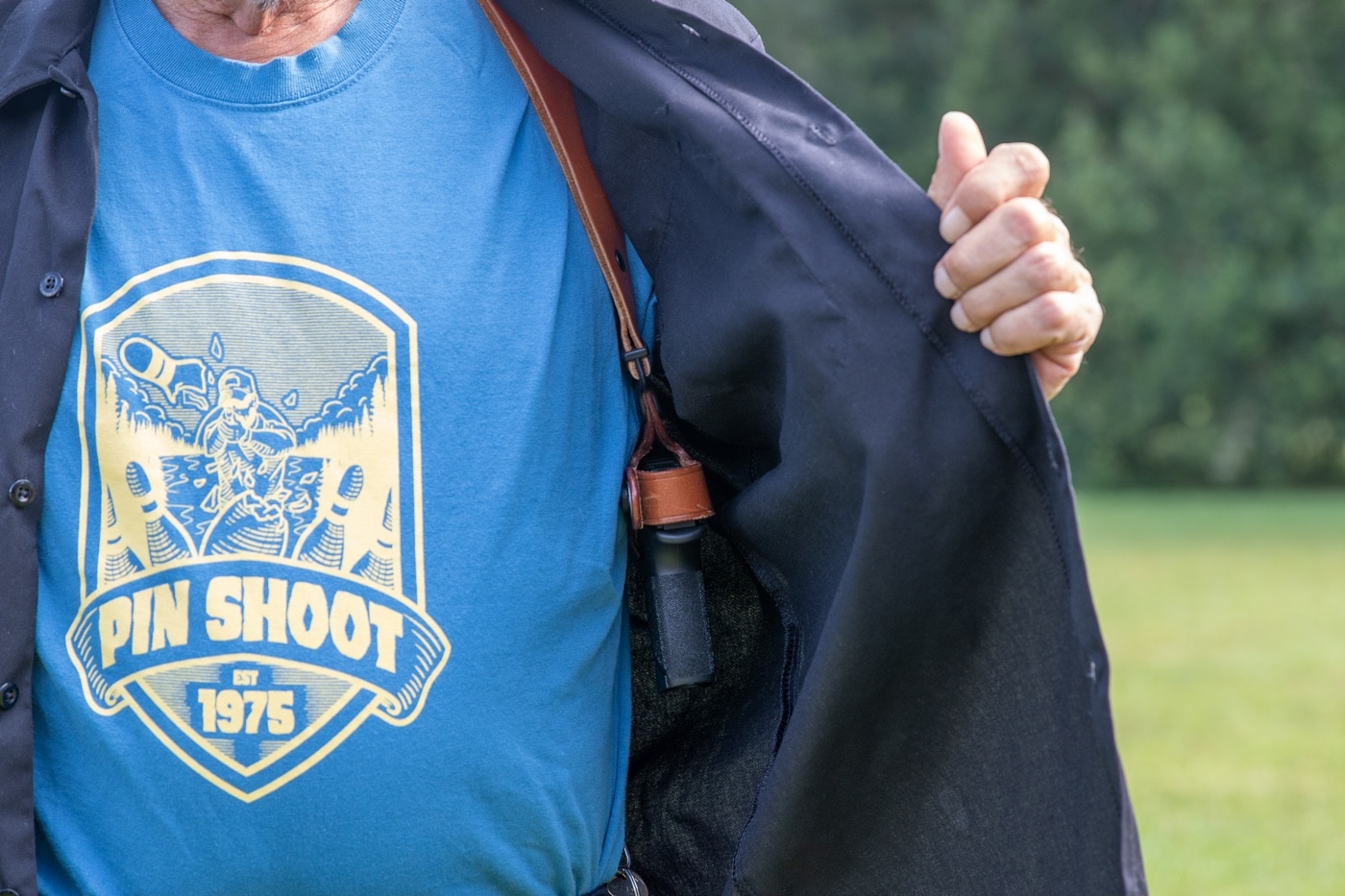
And for those of us with lower back or hip problems, the shoulder harness becomes an “orthopedic holster” that takes the weight of a gun and spare magazine off the hips. Slip on a light jacket or similar garment to ensure your defensive gun is neatly concealed from view.
Shoulder Holster Foundation
The leather “shoulder system” concept created circa 1969 by Richard Gallagher combined the holstered handgun on one side with spare ammo carrier and even handcuff carrier on the opposite. This not only “balanced the load” but allowed one to “shrug on” everything one needed in a single movement.
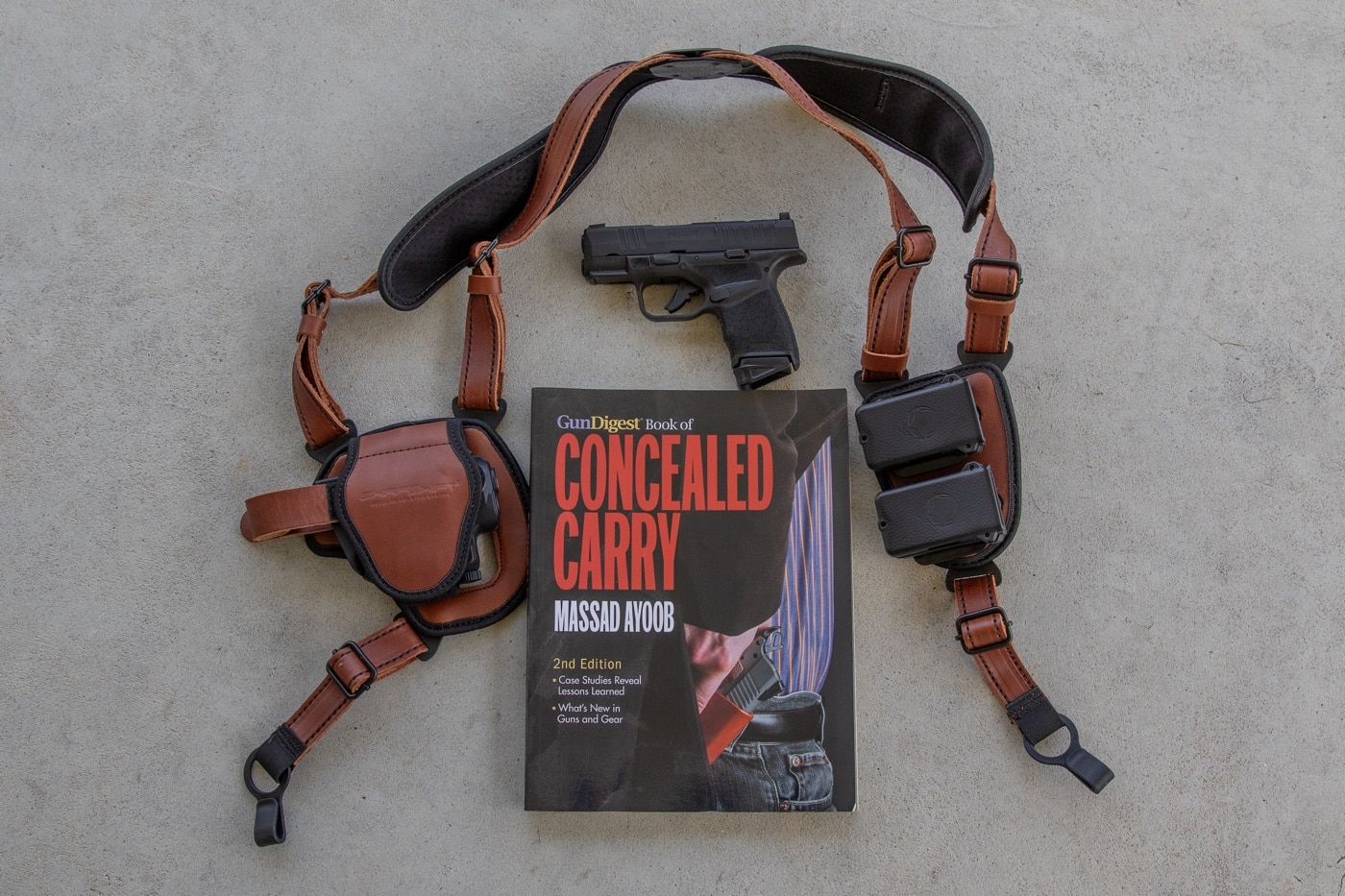
This worked great for detectives who thought their desk drawer was their holster during routine duties but were subject to an emergency call-out at any moment. As a private citizen, consider: the exact same principle lets you “shrug on” everything you need (if you have flashlight and communications adjacent) when something scary goes bump in the night.
[For additional equipment tips, also check out Home Defense Kit: Gear You Need.]
Having discussed the Why and the When, let’s look at the How of getting maximum performance out of shoulder holsters.
Safety and Efficiency in the Draw
As with any cross-draw type movement, there is danger of sweeping the shooter beside you on an organized firing line such as range practice. If a right-handed student shows up with the shoulder rig they regularly carry, I’ll put them on the far left of the line, and a similarly accoutered southpaw, on the far right.
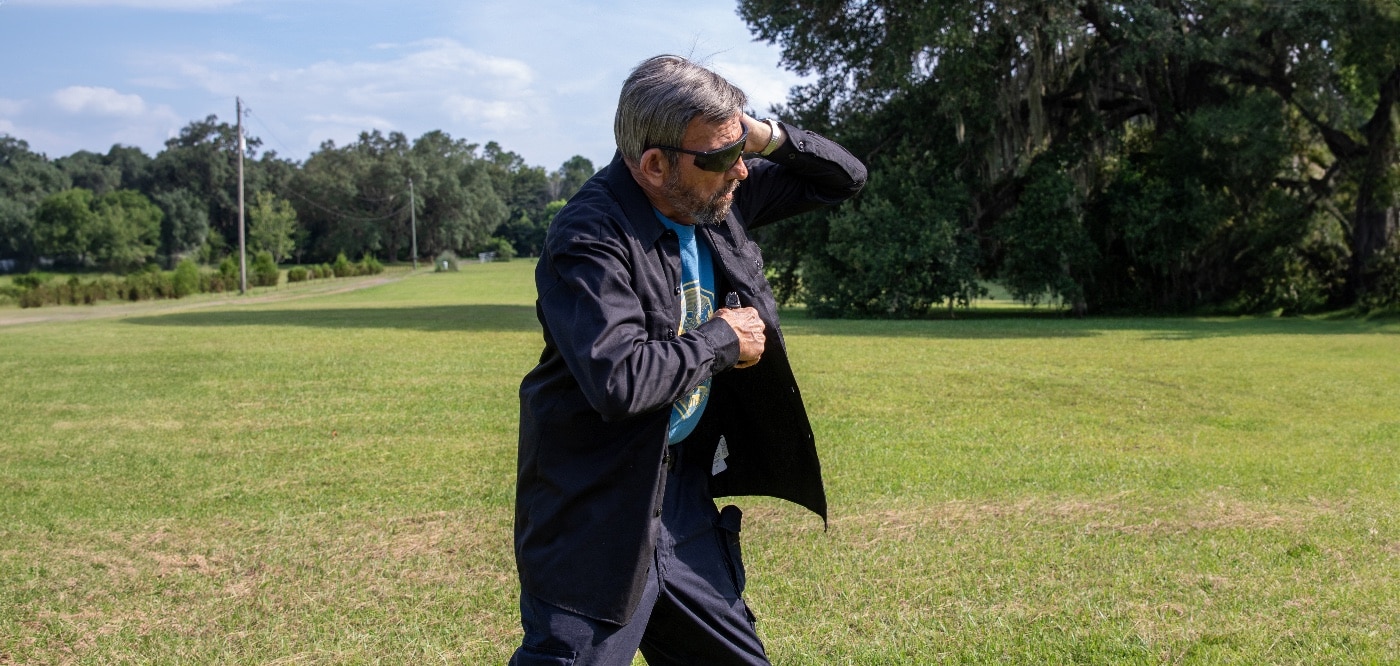
They will be required to blade their holster side toward the target. This minimizes the chance of their muzzle crossing a range officer behind them, a particular concern with horizontal shoulder holsters.
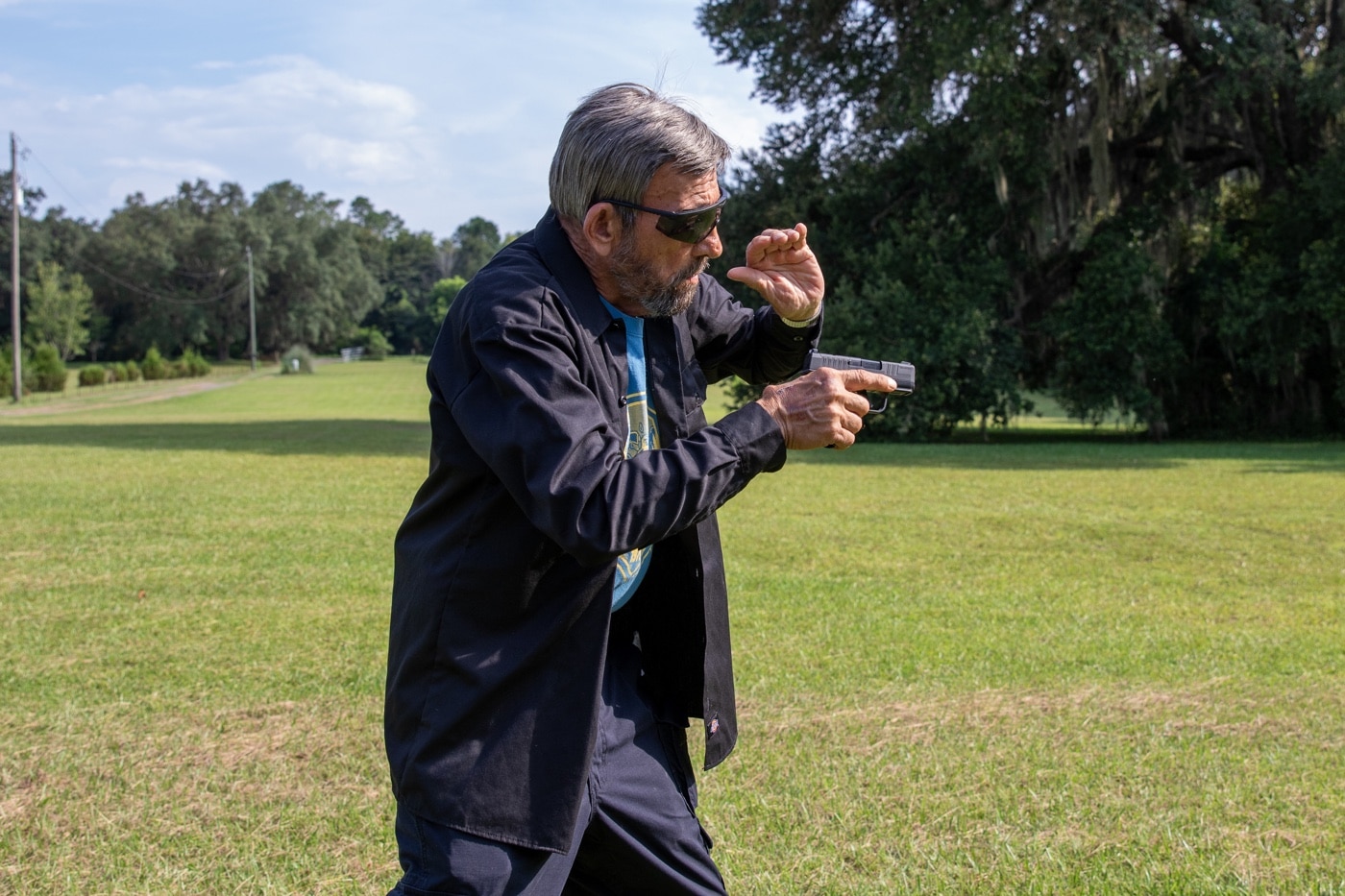
There is also a danger of the muzzle crossing the wearer’s own support arm on the draw. This risk is exacerbated by horizontal holster orientation. Accordingly, it is critical to raise the gun arm above the muzzle’s arc during the draw. The good news is that this also habituates the shooter to have the support arm in a blocking position in case of a close-range physical attack with a contact weapon.
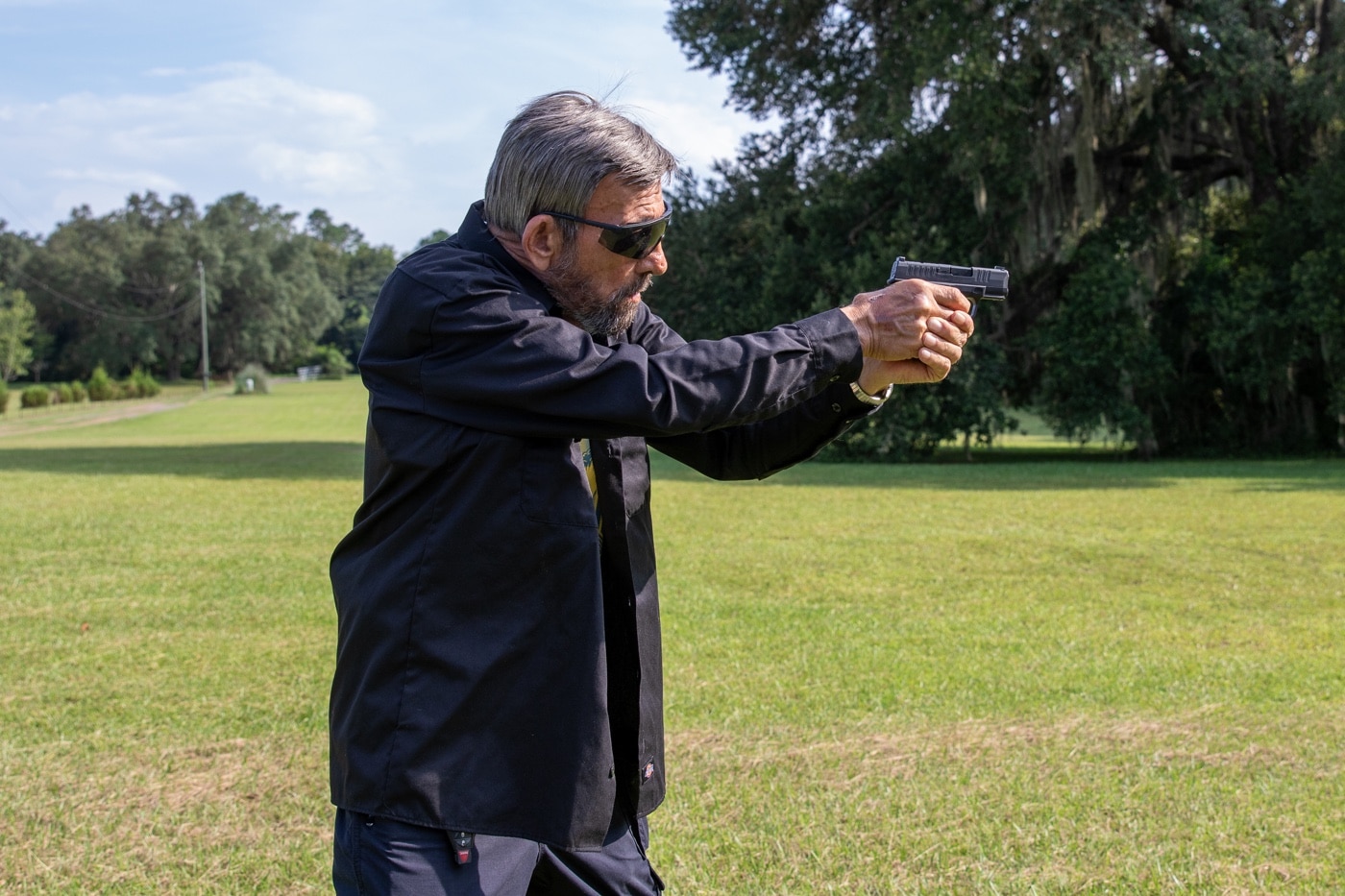
Some subtleties should be addressed. With the “Eliot Ness” style holster, butt up and muzzle down, the support arm can be brought up and out to the side, bent and parallel to the ground, because the muzzle will clear the holster well below that level.
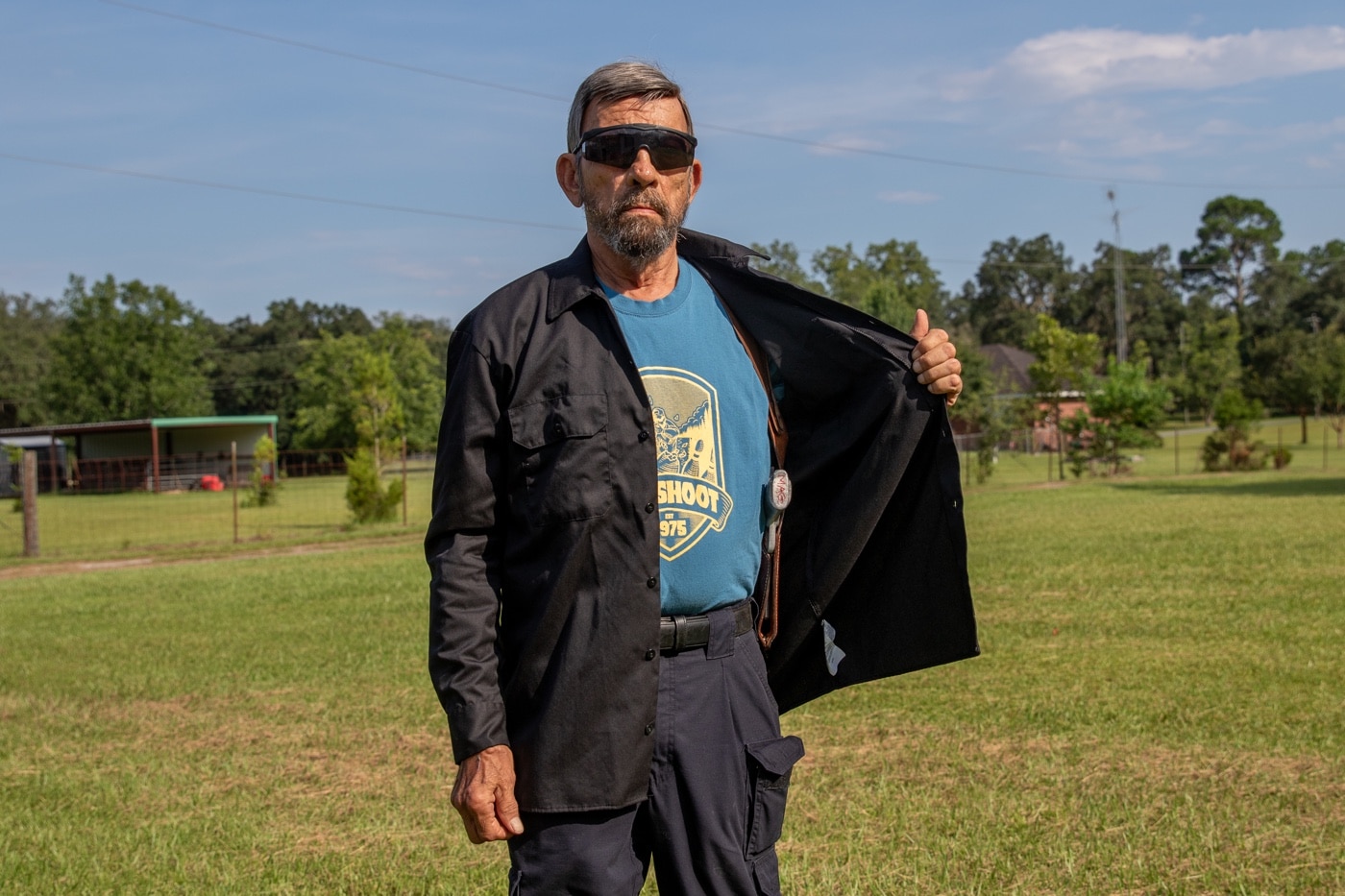
With such a holster, pull straight across the chest, not downward as seen in so many books and advertisements. That downward movement “flags” anyone behind you and on the holster side of you; it finishes with the gun too low to aim; and you have to slow your movement at the end of the draw or risk swinging past the target — all bad.

Straight across the chest brings it to retention position or line of sight very quickly. The horizontal arm keeps the support hand out of the way of the muzzle but allows it to take a two-hand hold much more quickly.
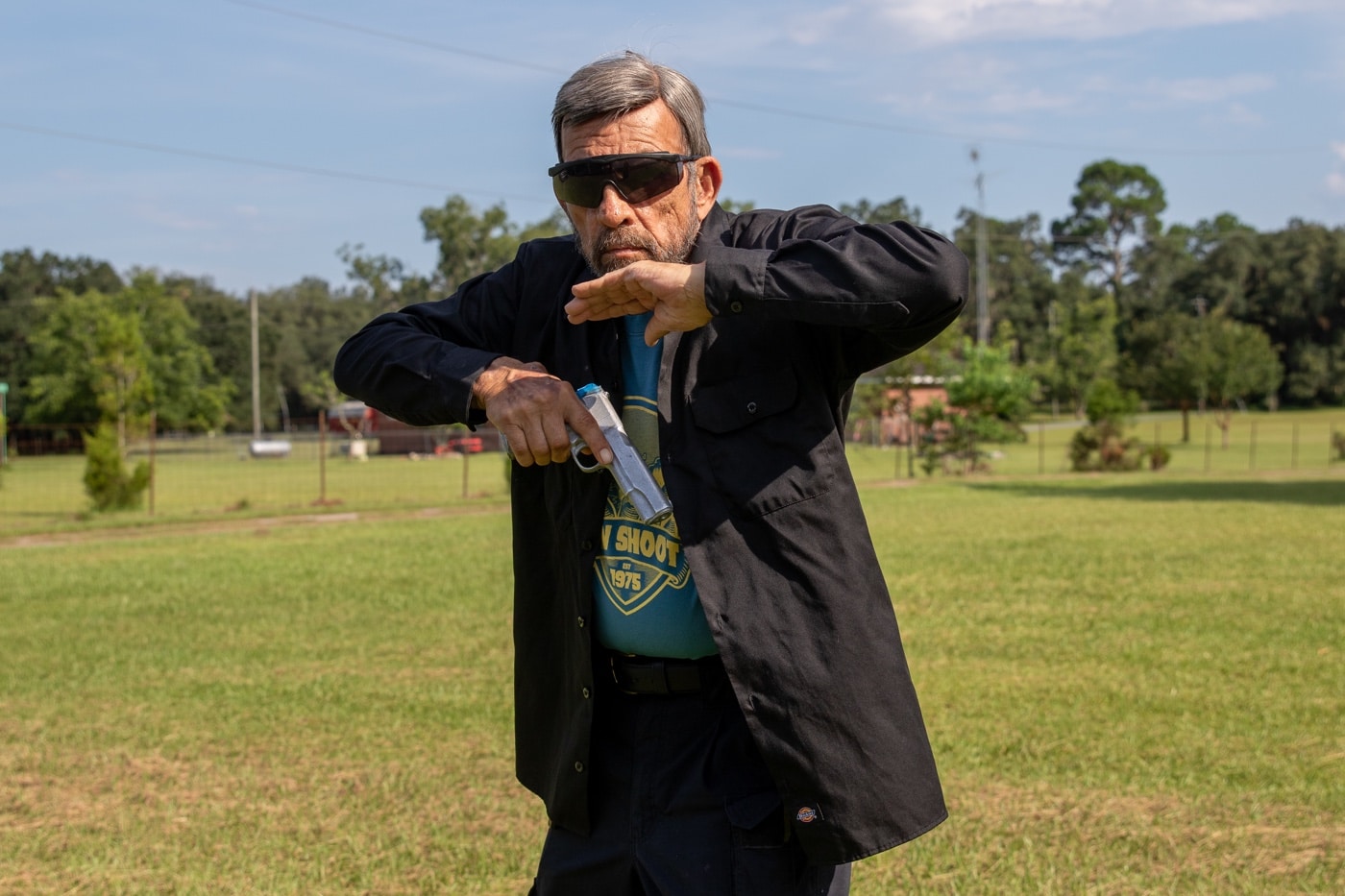
The great holster-maker and quick draw artist Chic Gaylord postulated that the horizontal carry was the fastest, and I can’t argue otherwise. However, it generally requires a thumb-break safety strap which can eat up that time saving. The muzzle is also closer in line with the support arm, so I teach a Kerry Najolia block with horizontal rigs.
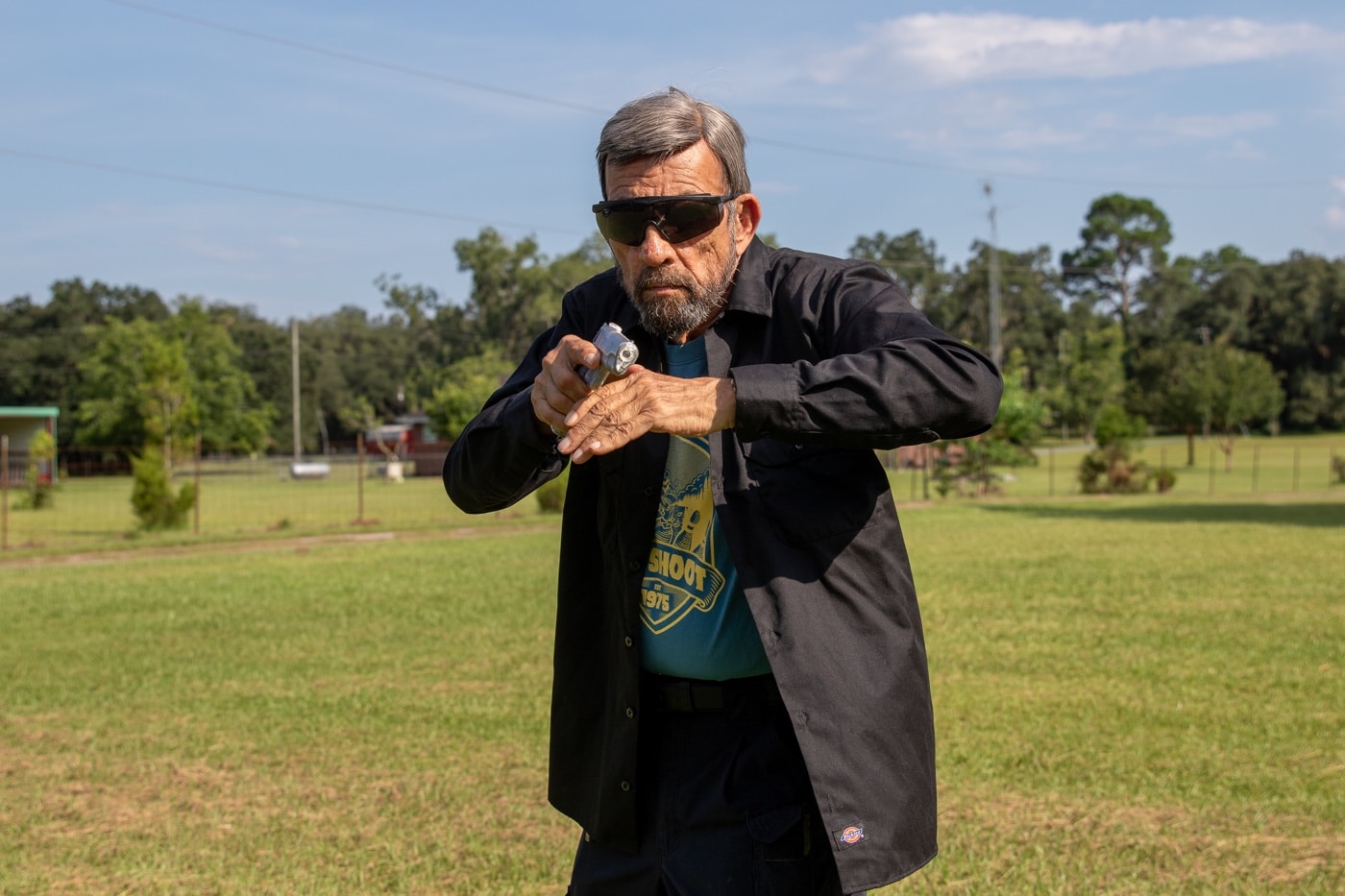
The support arm elbow comes up head high and forward, also a good blocking position. The great martial arts champion Graciela Casillas explains this type of block to her students with exquisite simplicity: “Run your fingers through the hair on your temple, front to back. That movement is the block!”
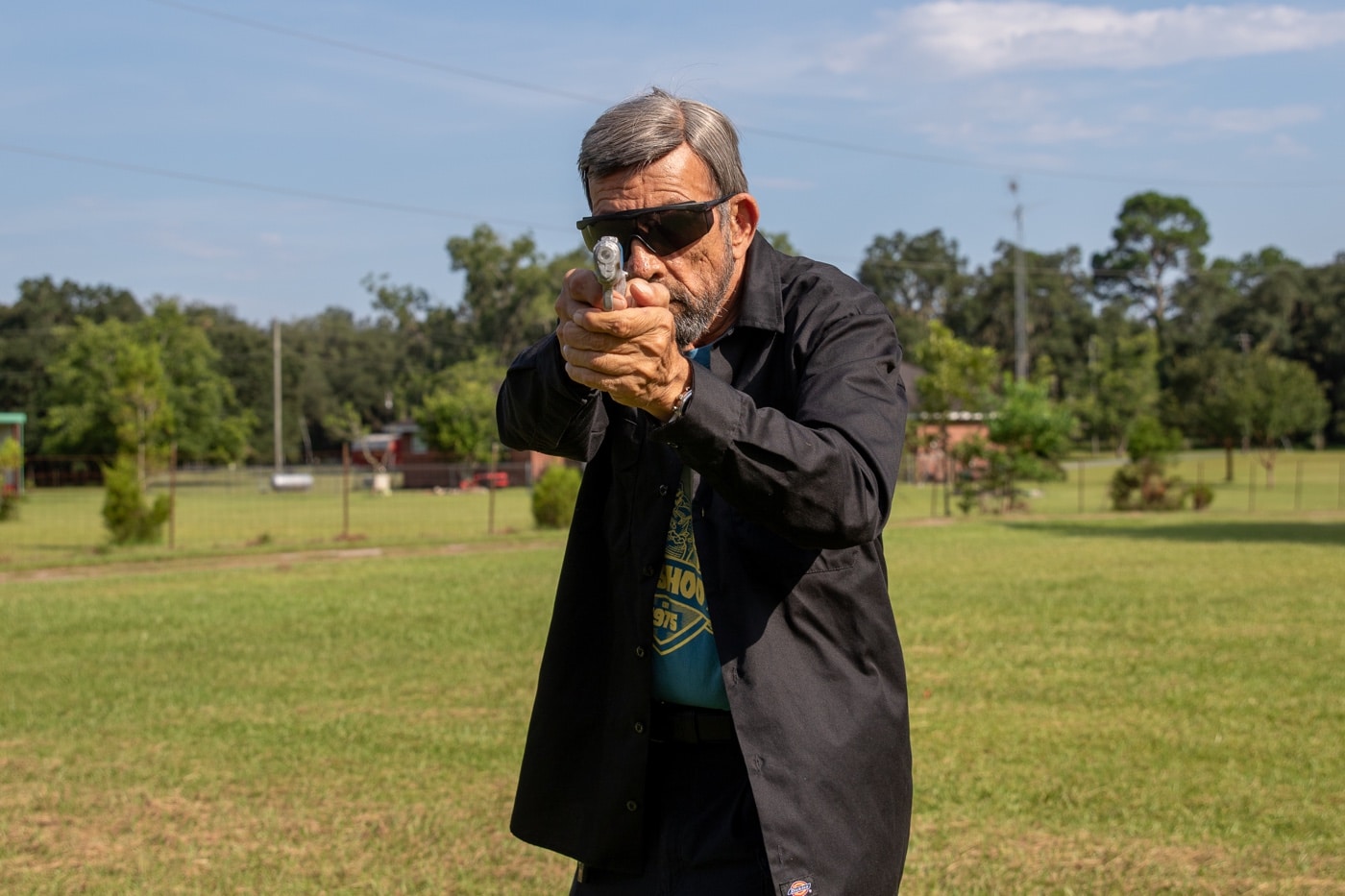
[Don’t miss Ayoob’s article on drawing with your support hand.]
Final Thoughts on Wearing a Shoulder Holster
In conclusion, the shoulder rig may be ideal for some people under all conditions, and useful to almost all under some conditions. It’s worth having one in your “holster wardrobe,” along with of course the safest, most efficient techniques for accessing it.
Editor’s Note: Please be sure to check out The Armory Life Forum, where you can comment about our daily articles, as well as just talk guns and gear. Click the “Go To Forum Thread” link below to jump in and discuss this article and much more!
Join the Discussion
Featured in this article
Continue Reading
Did you enjoy this article?

 378
378




